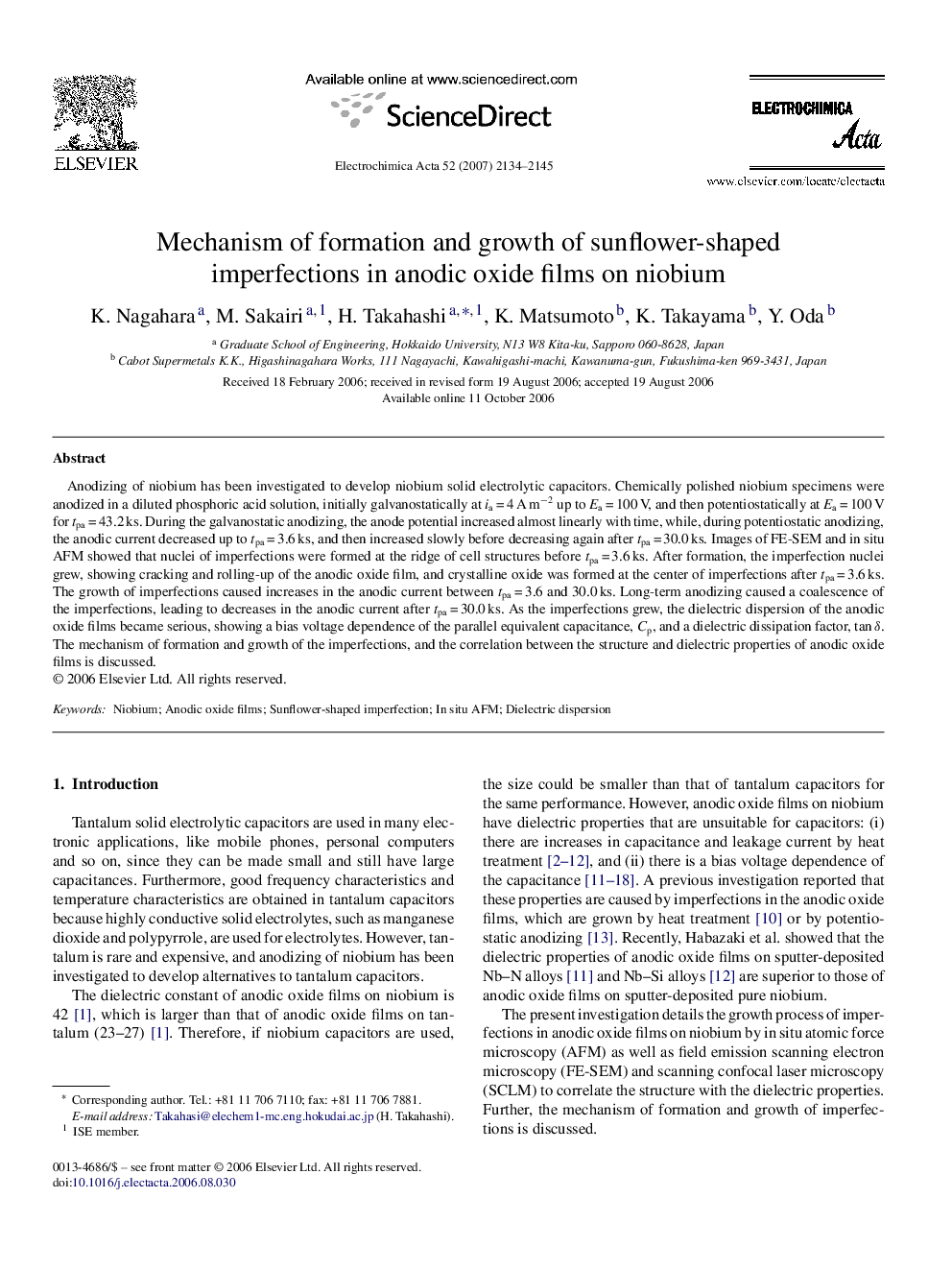| Article ID | Journal | Published Year | Pages | File Type |
|---|---|---|---|---|
| 196421 | Electrochimica Acta | 2007 | 12 Pages |
Anodizing of niobium has been investigated to develop niobium solid electrolytic capacitors. Chemically polished niobium specimens were anodized in a diluted phosphoric acid solution, initially galvanostatically at ia = 4 A m−2 up to Ea = 100 V, and then potentiostatically at Ea = 100 V for tpa = 43.2 ks. During the galvanostatic anodizing, the anode potential increased almost linearly with time, while, during potentiostatic anodizing, the anodic current decreased up to tpa = 3.6 ks, and then increased slowly before decreasing again after tpa = 30.0 ks. Images of FE-SEM and in situ AFM showed that nuclei of imperfections were formed at the ridge of cell structures before tpa = 3.6 ks. After formation, the imperfection nuclei grew, showing cracking and rolling-up of the anodic oxide film, and crystalline oxide was formed at the center of imperfections after tpa = 3.6 ks. The growth of imperfections caused increases in the anodic current between tpa = 3.6 and 30.0 ks. Long-term anodizing caused a coalescence of the imperfections, leading to decreases in the anodic current after tpa = 30.0 ks. As the imperfections grew, the dielectric dispersion of the anodic oxide films became serious, showing a bias voltage dependence of the parallel equivalent capacitance, Cp, and a dielectric dissipation factor, tan δ. The mechanism of formation and growth of the imperfections, and the correlation between the structure and dielectric properties of anodic oxide films is discussed.
